
12 minute read
Podcasts add new ‘Vision’ for communication 15
Pictured are the hosts of the Discover Your And podcast, part of the College of Arts and Sciences podcast endeavors. Top, from left: Ava Richardson, MSU senior, and Hannah Bateman, Arts and Sciences admissions coordinator. Bottom, from left: Holli Seitz, assistant professor in MSU’s Department of Communication, and Ellen Currie, MSU senior.
Podcasts add new ‘VISION’
Advertisement
for communication
By John Burrow
vision podcast
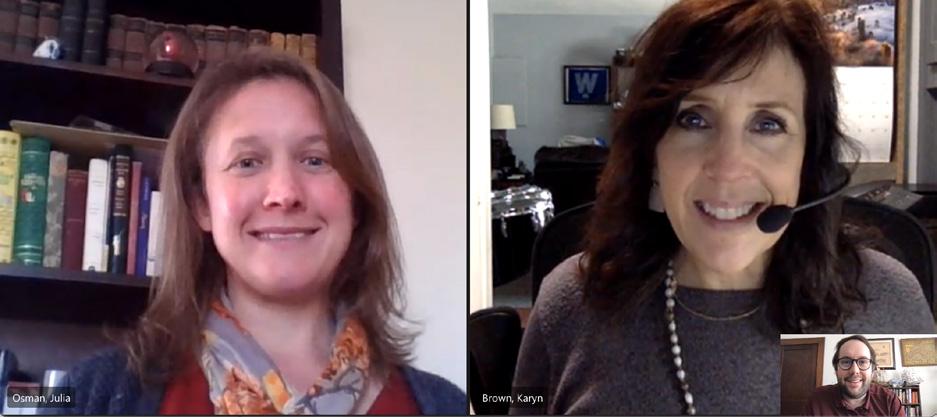
Mississippi State University College of Arts & Sciences Podcast for Faculty and Staff Available on Apple Podcasts and Spotify
The spring of 2020 presented new challenges for everyone. One of the difficulties was the ability to obtain accurate information quickly as the landscape of academia was changing daily. Faculty and staff were adjusting to a new normal for teaching, learning and academic routines and were asking for facts and details. Given the constructs COVID-19 presented, the communication team in Mississippi State’s College of Arts and Sciences brainstormed ways to provide a quick communication medium, allowing audiences to hear personally from administration and experts in an intimate format.
CAS Director of Communication Karyn Brown had previously investigated the possibilities of a college podcast in 2019 as the medium grew in popularity. Brown oversees public outreach for CAS and its various institutes and organizations. She also is a faculty member in MSU’s Department of Communication.
“Given the need for quick distribution of reliable information, it seemed like the perfect time to create the Vision podcast,” she said. “It was the best tool to provide timely discussions on topics ranging from systemic racism and inequality to virology and theater, equipping faculty and staff with updated and ongoing information pertinent in their world.”
Podcasts are similar to talk radio, but unlike radio, a podcast is a pre-recorded audio file available for downloading at the listener’s convenience.
Brown said she had researched communication channel trends used by adults and discovered that podcasting is a successful avenue for reaching faculty, staff, students and alumni.
“After investigating a bit further, I found that podcasts—unlike other communication platforms—have a more captive audience, with 85 percent of users listening to an entire show, or most of it,” Brown said.
“It is interesting that in a time when we have so many communication mediums, faculty and staff are still waiting to know more,” Brown said of the reinvigorated podcast medium. “The podcast provides us with a great mechanism to share news and information about the college, it’s easy to obtain, and can be listened to at one’s convenience.”
Brown said the podcast has found “tremendous success,” with more listeners tuning in each week.
“The Vision podcast has allowed CAS to respond to changes brought on by COVID-19, create fact-driven answers to pressing questions from faculty and staff, and discover another platform to highlight topics and research of interest to CAS in a timely fashion,” she said.
According to the New York Times, more than half of the U.S. population had listened to at least one podcast episode as of 2019. The NYT also reports that as of 2018, people ages 55 and over have begun listening more frequently.
The Vision podcast has featured Rick Travis, dean of the College of Arts and Sciences; Kathy Sherman-Morris, a dean’s administrative faculty fellow and professor in the Department of Geosciences; Athena Owen Nagel, an assistant clinical professor in the Department of Geosciences and recipient of the 2020 MSU Center for Distance Education Online Teaching Award; Michael Nadorff, an associate professor in the Department of Psychology and director of the MSU Sleep, Suicide and Aging Laboratory; and Leah Pylate, an assistant professor in the Department of Food Science, Nutrition and Health Promotion.
This podcast has had several hundred downloads since its beginning, with new participants joining after each episode. To access archived podcasts, visit https://www.cas.msstate.edu/facultyandstaff/ visionpodcast.
Along with the faculty and staff oriented “Vision” podcast, a student-centered podcast was created in 2021—”Discover Your And.” Hosted by CAS senior Ava Richardson, a communication major, and Hannah Bateman, admissions coordinator for CAS, each episode features students or advisors in the College of Arts and Sciences diving into topics such as maintaining academic success and student life at MSU.
What do you do when you lose the paddles to your boat and are in the middle of a body of water? You find a new way to navigate. It is amazing what you can do and accomplish when you don’t have a choice.
The week before spring break—March 2020—students in my public relations capstone class turned in their most challenging assignment of the semester. I told them to relax, put school behind them for one week and enjoy the break.
Little did any of us know that would be the last time we would ever see each other face-to-face in a classroom and academia as we knew it would change FOREVER.
After class, I left campus for the week and then met my son at his school for a weeklong school trip to Washington, D.C. with members of his sixth-grade class and a group of chaperoning parents.
Prior to our trip, I had seen news stories about the coronavirus, but there were no overwhelming indications we should not travel. My husband packed extra hand sanitizer bottles for the entire group, we told the children to be more diligent about good hygiene, and we voyaged on.
During our days in Washington, D.C., it became very clear that the world’s response to the coronavirus was changing rapidly. Each day, we were alerted about more closings and of COVID-19 cases appearing in the U.S.
On one of the last days of our trip we stopped to sample the best Virginia peanuts at a shop in Colonial Williamsburg, Virginia. As we prepared to get on the bus near the shop, our guide said she had just received a phone call informing her we wouldn’t be able to participate in the peanut tasting because the store wouldn’t allow sampling “out of an abundance of caution” because of the coronavirus. I could see the look of disappointment and concern on her face.
It was one of the first warning signs to me that the ways of our world were changing.
Our return home took us through the Atlanta airport. I’ve flown in and out of Atlanta since 1993 and in all those years of flying, I have never seen the airport so sparse. I could feel additional waves of concern overcoming me. This was real, the coronavirus was hitting closer to home, and life in the U.S. was changing.
My son and I arrived home, caught up on much needed sleep, and began telling my husband about our wonderful trip. We told him how strange it was to see airports with so few people and that the peanut store had stopped giving out samples. He looked at me and said, “Well, it’s not looking good for us. MSU is saying we may be off the week after spring break.”
Maybe it was the exhaustion from our trip, or absolute denial, but I was truly perplexed. “A week?? For what?” He replied, “To give faculty time to prepare to teach their classes online for a few weeks.”
It hit me like a ton of bricks.
Never did it occur to me that we would not be able to return to work or school after spring break. Then, I felt a wave of panic.
My heart sank. How in the world was I going to teach a senior capstone class fully online? I could not wrap my head around the logistics. True panic. Then, a wave of sadness overcame me. My sweet students who I had enjoyed so much for two
months were mostly graduating seniors. How would this be for them? What kind of panic were they experiencing? I knew I had to do whatever it took to bring a sense of normalcy to my students in the middle of a pandemic.
I was in the middle of the water, and I had no paddles. I could sink, or I could swim. I immediately thought about what communication tools I knew, which formats I would need to learn quickly, and who I knew that could help me with the rest. Although untraditional, I knew how to use Facebook and go live on that platform. At that time, I wasn’t familiar with Zoom, WebEx, Teams or any other video conferencing platforms. And, that is how I started.
I created a private Facebook group for our class and emailed my students asking them to spread the word and get every member of our class to join. I made my first online post—a Facebook live video saying hello to my students and assuring them that we WOULD make it through the semester one way or another. I often wondered if they could sense the fear in my voice. I told them to check our Facebook private group often as I would be communicating with them frequently through that medium. I tried to post positive messages and funny memes to divert attention away from the overwhelming sense of crisis that was looming.
Each day, news briefings brought more and more bad news. It became clear that my husband and I would not be returning to the classroom for the rest of the spring semester; we would be working from home. My son’s school contacted us to pick up his books as he, too, would not be returning to the classroom. We would be homeschooling. We had no choice—we had to find a way to balance homeschooling a 13-year-old while working full-time.
Learning how to teach sixth grade to my son while simultaneously learning how to teach a college senior capstone course online, I reached out to anyone I thought could help me “crash course” online formats for teaching. I contacted several colleagues who teach primarily online asking questions that could at least get me to the end of the spring semester. I felt so bad knowing they were surely bombarded with questions.
I remember the first time I heard the word “Zoom” while reading a friend’s Facebook post about how her workplace was navigating during the early days of COVID. Her post said, “Zoom was working well for them.” I quickly googled “Zoom” (which seems ages ago thinking of the number of times I’ve used the platform since April). Our graduate assistant mentioned that his wife used Zoom, and they would walk me through a tutorial.
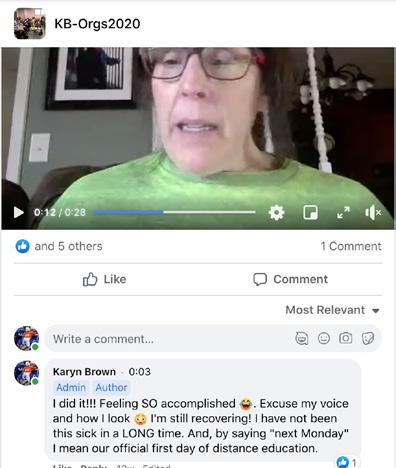
Brown teaching remotely during quarantine.

Brown used memes to keep the mood light during quarantine learning.
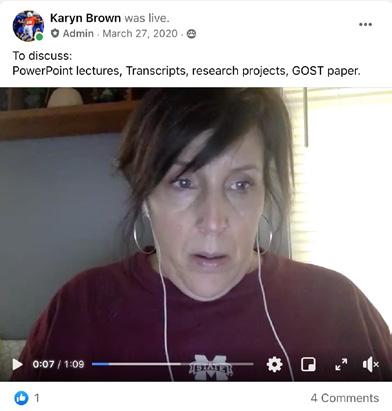
Brown’s Spring 2020 public relations capstone class, pre-COVID. Brown capitalized on the “Angry Cat” memes
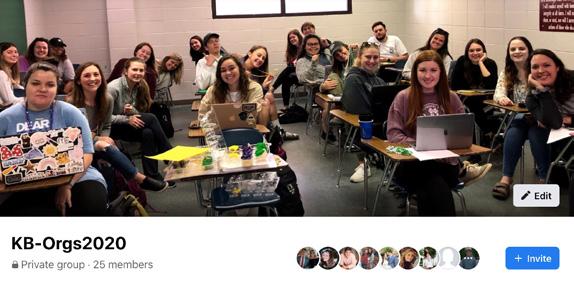
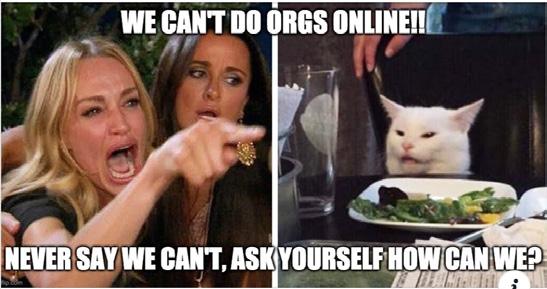
I’m thankful to this day for the time people provided me early in the pandemic to have the tools necessary to teach during the most difficult semester in my academic career.
I set up my first Zoom meeting using the free, 40-minute version with my class. I was so ripe on the platform I remember thinking this is probably going to be a fail! But then, one by one, I could see the little square boxes containing my students populate the screen. Part of me was jumping for joy that I made it work! But then, the tears streamed down my cheeks. I was so happy to see them! But at the same time I was deeply saddened thinking about how strange, difficult and scary this time would be for someone in their 20s instantly changing academic learning modes in order to graduate a month later and have the tools needed to be successful in their future career. I’m sure, too, part of that sadness was what so many of us felt at the onset of the pandemic—uncertainty of the future.
It was a challenging semester forcing me to learn to be flexible and provide myself grace when warranted, and to create a solid work-life balance (or as one of my colleagues called it “work-life unbalance”).
With a few adjustments, lots of online meetings, and a huge learning curve with technology, my Spring 2020 class finished the term. We made the best of a difficult situation, continued to focus on positives rather than negatives, laughed when we needed to, and will never forget the semester we finished completely online. Experiencing the onset of the pandemic together has created a bond we will always share.
Many people have asked me, “What is it like to teach during a pandemic?” I’ve said that on many days, it feels like I’m in a circus spinning plate after plate on long, tall sticks. I’m mentally drained at the end of the day, and my mental cache file stays full. As a teacher, there are so many more variables to think about than in the past when I could walk into a classroom and simply begin teaching.
I’ve had to learn more technologies in the past year than I have in the past few years.
Starting in Fall 2020, I began teaching my capstone class in a “hy-flex model”—half of my class face-to-face one day of the week while the other half of the class met virtually, then swap for the second class meeting of the week. I had to record all lectures, post all lectures, have all class materials on Canvas (our online teaching platform), ensure I had a microphone on, talk to students in person and virtually at the same time, and incorporate virtual meetings often. Teaching with masks on also presents difficulties.
I didn’t realize how hard it would be to get to know my students’ names when all I could see peering over a mask was a set of eyes.
I do have a few big takeaways from my experience teaching during COVID-19. First, as great as online class formats can be for many students, there truly is a difference when students and teachers don’t have a face-to-face component to the learning experience. Students learn differently, and it is important that we look for ways to have online class methods that meet those needs. Secondly, I was forced out of a comfort zone and tried new tools and techniques in my teaching that I will continue to use in the future. I probably would not have tried these tools if it were not for the pandemic. For that, I am thankful.
Lastly, I learned that when faced with adversity, people can do amazing work.
To my Spring 2020 section of CO 4813, we accomplished what we didn’t think was possible—you are COVID heroes to me.




